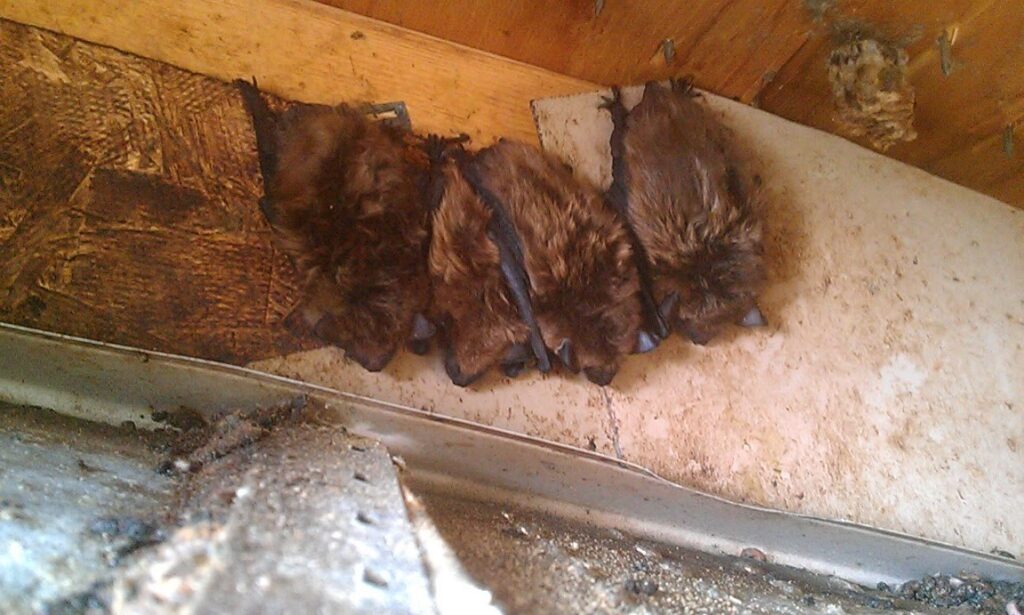If you see one bat another is not far behind. So, save your screams. Bats are a regular fixture of Hamilton’s summer night sky. They flap and flutter back to their colony. It’s easy to determine the shadow of a bat. Its flight patterns are more jagged than a bird, but bats have more control over accuracy as they fly. Echolocation helps them determine what’s in front of them so they don’t fly into each other and can find their way back home.

Bats huddled together in a soffit
The largest groups of bats can be found when they’re hibernating. Some species will migrate to winter hibernation dens. Others will go into torpor, a state of decreased physiological activity. A lot of bats will retreat to caves, attics or barns to hibernate for six months. Hibernation colonies can vary from a couple bats in your attic to millions in a cave.
Bats are very social animals. There are two social structures. Fusion is a large number of bats that meet in one roosting area. So, they would construct a roost on your property or in a tree and return every day to rest. The second social structure is fission. This is when bats break from the main colony and form sub-groups. Brave independent bats will switch roosts and often end up in multiple locations with a variety of roost mates.
Bats come out of hibernation in early spring and search for summer homes. Females are typically the first to decide on nesting areas as they are ready to give birth. These new colonies are called maternity or nursery colonies. Baby bats typically stay close to their mothers for nourishment until they’re ready to hunt and fly. The mother and baby will remain in the roost until fall when it’s time to find a place to hibernate again. Before leaving, male bats will flock in huge numbers to mate with the females before repeating the process again.
In bat groups there are no queens or leaders. They just enjoy being together. If bats have found access to your attic or walls they could be there for a while. Don’t be fooled by seeing a solitary bat in your house. They are usually part of a larger group living elsewhere in the structure. For bat colony removal contact Hamilton’s Skedaddle Humane Wildlife Control.
Skedaddle Humane Wildlife has been removing and excluding bats from houses since 1989. Trust our humane and effective methods to keep your home bat free. Call today – 1-888-592-0387


